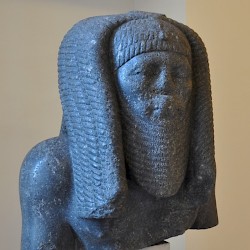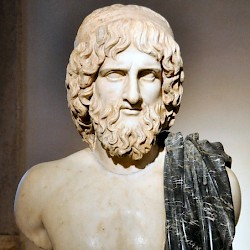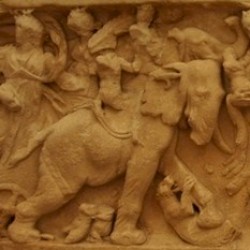Rome, Museo Nazionale Romano - Palazzo Altemps
Q1816007The porter of the Palazzo Altemps, just north of the Piazza Navona, is so uninterested that he does not even look in the book he has taken with him. He’s just bored. After he’s sold you a ticket and has started to gaze at the door again, your bag will be checked in an X-ray machine by a guard who is at the same time watching a soccer match. Abandon all hope, all ye who enter… if only because it will make your surprise even bigger.
The Palazzo Altemps, a Renaissance palace now beautifully restored, is the home of the former Ludovisi collection, which once graced the gardens of a villa on the Via Vittorio Veneto. Among the works of art are the Ludovisi Ares, the Ludovisi Throne, and the Ludovisi Sarcophagus (the lid of which is in Mainz). Many of these pieces were already known in the sixteenth and seventeenth century, when the owners felt obliged to return their precious possessions to their former splendor and invited artists to restore them. The grip and pommel of the sword of the Ludovisi Ares, for example, were made by Bernini, who managed to create something that both suits the original work and attracts your attention.
Many museums have a policy to remove these Renaissance and Baroque additions. Occasionally, a nose is allowed to remain, but armless, headless, and legless statues are normal. The directors of the Palazzo Altemps (or, better, of the National Museum, of which the Altemps palace is part) have decided to present their collection as the Renaissance collectors wanted it to be. Clear explanatory signs indicate which parts are ancient and which are not.
It is a remarkable and courageous choice. But when you walk through the stately rooms of the fifteenth-century mansion, and when you see the sculpture together with the Baroque frescoes and the lowered ceilings, you recognize that the gamble has paid off. The Palazzo Altemps is one of the most surprising museums in Rome.
This museum was visited in 2009.
7 pictures related to this museum
 Caesarion |
 Aristotle |
 Portrait of an old king Amunemhet III |
 Hostilian |
 The Ludovisi Pluto |
 Rome, Relief of a Dionysiac Procession |
 Rome, Gardens of Caesar, The Galatian Suicide |